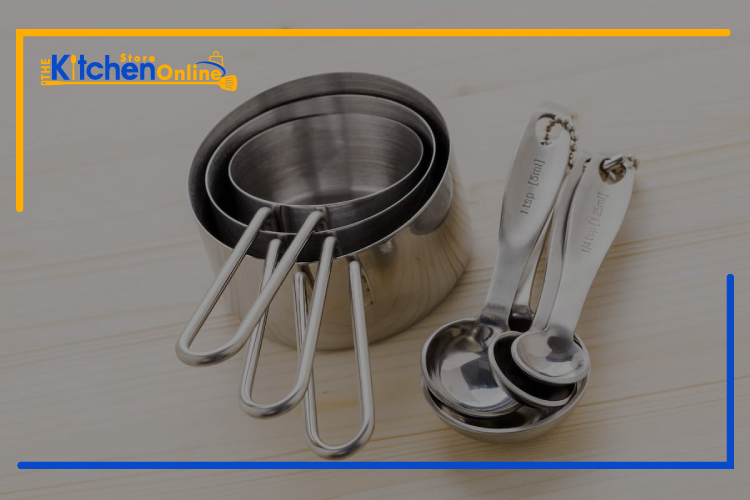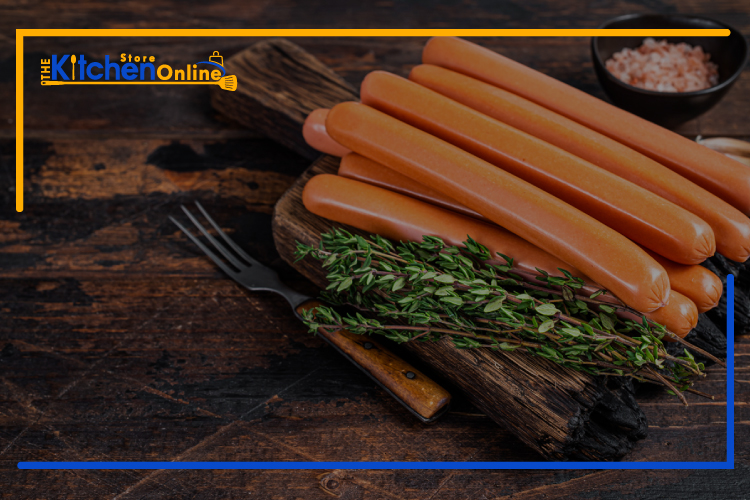One measuring spoon does not suffice to measure a thousand different ingredients. Would you want to learn that you don’t even own a measuring spoon, to begin with?
You can save yourself a lot of frustration, time, cleaning, and even space in the kitchen by being able to measure a teaspoon without measuring tools.
You will be able to measure your ingredients in less time once you have mastered these tricks!
So, how do you measure a teaspoon without measuring tools? You can use “pinch” as a simple and accurate method. Pinching 8 fingers together equals one teaspoon. Several other methods can also be used, such as using the size of a thumb as a measuring tool.
The skill will be useful in the future but will require some practice and accurate tools.
Our article today discusses different methods to accurately measure a teaspoon without using any measuring tools, along with alternative means of accumulating accurate measurements.
The size of a teaspoon will be discussed, as well as how it can be mimicked and how calculations are made using larger quantities.
A Teaspoon in Perspective
The first thing you have to consider when deciding how much to measure a teaspoon when you’re cooking or baking is the variety of factors you have to consider.
Taste is an important part of cooking! When it comes to cooking, it’s not important to use exactly one teaspoon of everything. It is harder to bake, however, since baking involves some science.
Baking is a chemical reaction between ingredients, which means a precise ratio of ingredients must be followed in order to create the desired texture. Baking margins are much smaller than cooking.
Finding an accurate way to measure your ingredients will likely benefit you if you are uncertain about your estimations.
As a result, let us take a closer look at the humble teaspoon.
The teaspoon weighs 0.10 fluid ounce (5 milliliters) or 0.10 fluid ounces (one-tenth). About one-third of a tablespoon. When weighing dry ingredients, you often use weight measurements, while measuring liquids you always use fluid measuring units.
It’s important to know that different ingredients are measured differently in dry and liquid forms. It is not possible to weigh 1 milliliter of milk with 1 gram.
Consider this before choosing one of the alternatives listed above.
Why It’s Useful to Measure Without Measuring Tools
Learn how to measure a teaspoon without measuring tools, and you’ll see that there are actually a bunch of benefits to doing so.
Having the ability to bake and cook whatever you like wherever and whenever you like will be one of the biggest benefits you will gain.
The most common mistake people make when traveling is forgetting to pack measuring tools. Many people assume their accommodations are equipped with measuring tools.
Getting to the destination is sometimes impossible if you happen to arrive in the middle of nowhere.
You can also save space by not carrying measuring spoons both when you cook and when you travel.
In our experience, packing these tools is extremely difficult, especially when camping. They are awkwardly shaped and large, making them difficult to pack and transport.
You can save a lot of time by measuring without tools. You won’t have to worry about losing a spoon, changing scale batteries, or washing equipment constantly if you measure without them!
How to Measure Without Any Tools
Despite the preference for tools when measuring ingredients, sometimes you don’t need such a high level of accuracy.
You will eventually be able to measure more accurately, even when you are baking, by practicing these methods.
The Pinch Method
You can use the pinch method to measure out small amounts such as teaspoons without using any tools.
Simply pinch your thumb, index finger, and middle finger together (that’s your thumb, index finger, and middle finger). To add spice, powder, or sweetener to a bowl, take a pinch with your three fingers.
The amount of pinches equals one-eighth teaspoon, so you’ll need eight pinches to make a teaspoon.
By measuring your pinches with an accurate teaspoon after adding them to a bowl, you can practice this method. Determine what size pinches you have by using this method.
The Palm Method
The coin method is another fantastic tool-free method. This method should only be used for cooking, as it is more accurate than pinching.
Imagine the size of a quarter (coin) in your hand. Make a mound of your spice or powder to fill the area. 1 teaspoon is equal to 1 mound.
A nickel is about the size of a teaspoon, while a dime is about the size of a quarter.
Other Comparisons
You can also check out some of these comparisons if neither of those methods works for you. You can measure out the measurements and calculate the amount for each of them.
- One teaspoon is approximately the distance from your thumb’s ligament. Start measuring near the first joint and go to the tip.
- To measure one tablespoon, measure your palm from the tip of your second joint (your thumb) to your second joint (your palm). One-third of a tablespoon is one teaspoon.
Always remember to compare your thumb size to an accurate teaspoon in order to get the best results!
- Approximately two tablespoons equal one ping pong ball. Subtract six teaspoons from that amount.
- An egg of this size will measure about 14 cups in volume. The amount contained in a 1/4 cup contains 12 teaspoons. Subtract 12 from the total to get your teaspoon.
- One teaspoon is usually measured by medicine spoons, so this is a useful makeshift weighing device.
Tips and Tricks
Practicing, practicing, and practicing some more! You will eventually become so confident that you will stop using tools once you have mastered measuring without them.
A good measurement tool is a must when starting out.
Try to recall what the powder or product looked like after measuring 1 teaspoon. Repeat the process several times.
Then, measure the amount by pouring directly into your palm. For example, the egg or the end of your thumb are also valid examples.
Other odd objects may also be lying around in the house, for instance, a lid from a plastic soda bottle. Take measurements and note the quantity. This makes it possible to measure everyday ingredients.
How to Measure with Other Tools
There are a couple of different methods you can use to measure one teaspoon if you don’t have a teaspoon but still need to make very exact measurements.
The most accurate method will be to use another measuring cup or spoon, especially for liquids.
- 8 x 1/8 teaspoon (0.620ml) = 1 teaspoon
- 4 x ¼ teaspoons (1.25ml) = 1 teaspoon
- 2 x ½ teaspoon (2.5ml) = 1 teaspoon
- 1 tablespoon = 3 teaspoons
- 1/8 cup = 6 teaspoons
- ¼ cup = 12 teaspoons
- ½ cup = 24 teaspoons
- ¾ cup = 36 teaspoons
- 1 cup = 48 teaspoons
This makes measuring 1 teaspoon very easy. One teaspoon is equal to the contents of 1/2 cups divided by 24.
If a cup gets bigger, it will make measuring the fraction of a cup more difficult, but for smaller items, such as a tablespoon, it is simple to measure one-third.
As well as using a scale, you can measure teaspoons with a measuring cup. One milliliter doesn’t always equal one gram, as we’ve discussed previously.
Ingredients are weighted differently based on their volumes. As a result, 5 milliliters will not always equal 5 grams.
As soon as you understand the differences between the weight and volume of an ingredient, you can use this method to measure extremely accurately when baking.





